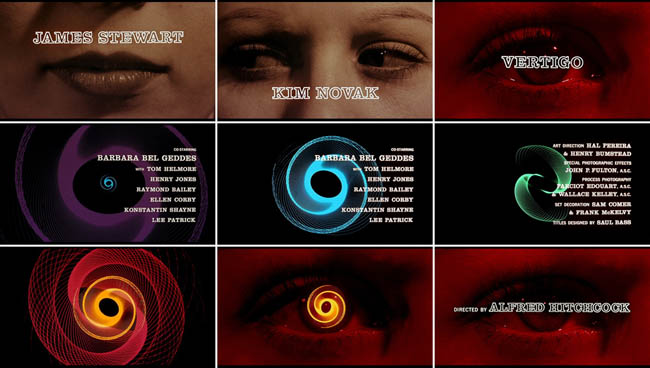Siskel To Screen Rare, Vintage Print of Hitchcock's Vertigo
By Rob Christopher in Arts & Entertainment on Sep 19, 2012 6:20PM
Which Vertigo do you know and love? The first Vertigo we saw was the pan & scan TV version. It aired regularly on one of our local independent stations while were in high school, and although we watched it in bits and pieces, we just couldn't get too excited about it. Perhaps it was all the commercials; more than almost any other Hitchcock movie, Vertigo functions as a kind of sustained dream. The beautiful rhythm—wordless sequences, like Scotty's pursuit of Madeline, alternating with dialog-driven ones—is smothered when constantly interrupted by pleas to buy a car or eat at McDonald's.
Our next Vertigo was the early '90s pan & scan VHS incarnation. We slowly began warming up to the movie. Nevertheless, watching it in our dorm room on a 13" TV/VCR combo left something to be desired.
Then, at last, in 1996, after a painstaking restoration by Robert A. Harris and James C. Katz, we really saw Vertigo. A 70mm print played at the McClurg Theater. Awash in the startlingly beautiful San Francisco vistas and eerie shimmer of Bernard Herrmann's score, we left the theater in genuine awe. Now, we finally got it.
Clearly, we're not the only ones to have come around to getting it. The "greatest film ever made," according to Sight & Sound's newest poll, Vertigo is more revered than ever. Yet that 1996 restoration, now held as the de facto definitive version, has its detractors. Among them is artist and Chicago Reader scribe Fred Camper, who is featuring the film in his current class on American Cinema of the 1950s held Tuesday nights at the Siskel.
Camper has no qualms about the visual aspects of the restoration. Indeed, the ravishingly saturated VistaVision hues have been widely praised. No, it's the sound he doesn't like:
The new sound track, however, is a serious mistake. Wishing to use original stereo music tracks, though the film was released in mono, the restorers had to rerecord all the sound effects: how can remaking the sound be called "restoration"? The new footsteps are too loud, and the sounds of car doors closing in stereo have an almost pornographic realism that disrupts the dreamlike mood that the original, quieter sound track helped foster.Through a combination of dogged pursuit and good old fashioned luck, when Camper gives his lecture on Vertigo next Tuesday the Siskel will be showing a rare IB Technicolor print of the 1958 release version. That is, the vintage Vertigo, vibrant colors, original soundtrack, and all. So what is Technicolor IB? The imbibition Technicolor process (sometimes also referred to as "Dye Transfer" or "IB") is the most stable, archival color motion picture process ever put to widespread use; when properly stored and handled its colors do not fade, so IB prints really are something special (just ask fans of Star Wars and Jaws). We've seen a lot of different Vertigos, and this is another we wouldn't want to miss.
Vertigo screens Friday and Tuesday; Fred Camper will only lecture at the Tuesday show. Tickets are $4-$11. The Siskel Film Center is at 164 N. State.
